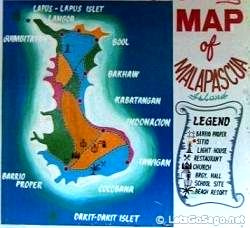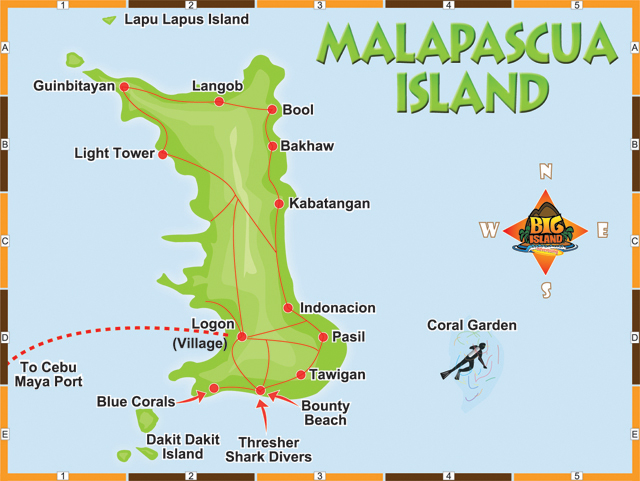
-
МјРЇСІИёСЖШИМі
-
 И№ОЫ КИОЫ Йъ ЗЛЦЎЧЯБт~ ИЎСЖЦЎ ПЙОрБюСі
И№ОЫ КИОЫ Йъ ЗЛЦЎЧЯБт~ ИЎСЖЦЎ ПЙОрБюСі 89,547
89,547 -
 [ЧЪИЎЧЩ ММКЮ] ФЋИ№ХзНК ПЉЧр 100Йш СёБтБт
[ЧЪИЎЧЩ ММКЮ] ФЋИ№ХзНК ПЉЧр 100Йш СёБтБт 49,256
49,256 -
 ИЖДвЖѓ НУГЛ - ИЎРп АјПјСЄКИ. (ЛчСј 16Рх ЦїЧд)
ИЖДвЖѓ НУГЛ - ИЎРп АјПјСЄКИ. (ЛчСј 16Рх ЦїЧд) 30,822
30,822 -
 ММКЮРЧ СіПЊСЄКИ15,545
ММКЮРЧ СіПЊСЄКИ15,545 -
 ИЖДвЖѓ БйБГ - ЕћАЁРЬЕћРЬ ПЉЧр СЄКИ14,366
ИЖДвЖѓ БйБГ - ЕћАЁРЬЕћРЬ ПЉЧр СЄКИ14,366 -
 [ЧЪИЎЧЩ ММКЮ/ИЗХК] ШЃХк МїЙк ПфБн Йз СЄКИ13,338
[ЧЪИЎЧЩ ММКЮ/ИЗХК] ШЃХк МїЙк ПфБн Йз СЄКИ13,338 -
 КИЖѓФЋРЬРЧ И№Еч И№НРРЛ КММі РжДТ ЛчСјУИ.13,155
КИЖѓФЋРЬРЧ И№Еч И№НРРЛ КММі РжДТ ЛчСјУИ.13,155 -
 ИЖДвЖѓ БйБГ - ЦХЛѓЧб ЦјЦї ПЉЧрСЄКИ12,849
ИЖДвЖѓ БйБГ - ЦХЛѓЧб ЦјЦї ПЉЧрСЄКИ12,849 -
 [ММКЮ-ЙшМБТјРх] МБЙкШИЛч РќШЙјШЃПЁПф~12,474
[ММКЮ-ЙшМБТјРх] МБЙкШИЛч РќШЙјШЃПЁПф~12,474 -
 ИЖДвЖѓ СіПЊ(ПЁИЃЙЬХИ -ИЛЖѓХз)РЧ СіЕЕ/ЧбБЙ РННФСЁ/МюЧЮИє12,130
ИЖДвЖѓ СіПЊ(ПЁИЃЙЬХИ -ИЛЖѓХз)РЧ СіЕЕ/ЧбБЙ РННФСЁ/МюЧЮИє12,130


Malapascua Island is a Filipino island situated in the Visayan Sea, located across a shallow strait from the
northernmost tip of Cebu Island. Administratively, it is part of the insular barangay of Logon, Daanbantayan
Municipality, Cebu Province, the Philippines. Malapascua is a tiny island, only about 2.5 kilometres (1.6 mi)
long and 1 kilometre (0.62 mi) wide, and has eight hamlets.
Most of the islanders derive their livelihood from tourism, while some still rely on subsistence fishing and
farming.
Religiously, Malapascua Island or barangay Logon is believed to be the place where the Virgin delos
Desamparados made a miracle sometime in 1890 when the island said to have only nine households of the
Monteclar, Deogrades, Rosales, Gulfan, Rubio, Bohol and Bruces families. It was said to be a piece of wood
that had never burnt. In 1907, the parish priest of Kandaya, now Daanbantayan town, Rev. Fr. Inocentes Maga,
baptized it of its name upon the request of the local residents. The size of the image is not the original size and
it is said to be growing until present. Devotees from different parts of the country and even abroad are coming
during the feast on May 11 and 12 of every year. The chapel was originally made of coconut palm and leaves but at present, it is made of steel and cement because of donations of the devotees for the churchтs improvement.
Economically, during the early period, natives of the island were dependent on fishing as a source of livelihood. Agricultural products such as corn and rice were supplied from Leyte which is close to the island. As time has
changed the lives of the people and the discovery of the natural beauty and attraction, development gradually
changed the living condition. Fishing is not so abundance as before prompting the people to shift to another
business for tourism industry. Malapascua is still blessed to have the famous Thresher Sharks in the Monad
Shoal, only in the world that gives so much attraction to foreign tourists. The people attributed the intercession
of the Virgin of saving the people from scarcity of fish catch among fishermen to commercialization of the place
due to the influx of tourists that give alternative livelihood among the residents and boost their income.
- ЁЄ

- ЁЄ
- ЁЄ
- ЁЄ
- ЁЄryWvMVxeet
- ЁЄryWvMVxeet
- ЁЄryWvMVxeet\'\"\\(
- ЁЄryWvMVxeetщ\'\"\\(
- ЁЄryWvMVxeet
- ЁЄryWvMVxeet
- ЁЄryWvMVxeet
- ЁЄryWvMVxeet
- ЁЄryWvMVxeet
- ЁЄryWvMVxeet
- ЁЄryWvMVxeet















 ЧЪРкДхФФ ОпАЃЛѓДу ПРЧТ
ЧЪРкДхФФ ОпАЃЛѓДу ПРЧТ 13ГтПЌМг МвКёРкИИСЗ 1РЇ
13ГтПЌМг МвКёРкИИСЗ 1РЇ

 ГЛАд ИТДТ ОюЧаПј УЃБт
ГЛАд ИТДТ ОюЧаПј УЃБт
 ИЎОѓ ЧаБГ ЙцЙЎБт
ИЎОѓ ЧаБГ ЙцЙЎБт
 СжИЛПЁ ГЛАЁ ОЕ КёПыРК?
СжИЛПЁ ГЛАЁ ОЕ КёПыРК? УжАэАЁМККё РЬКЅЦЎ СёБтБт
УжАэАЁМККё РЬКЅЦЎ СёБтБт
 ЧіСіПЁМЕЕ ЧЪРкДхФФ!
ЧіСіПЁМЕЕ ЧЪРкДхФФ! ЧіСіПЁМ АЁДЩЧб
ЧіСіПЁМ АЁДЩЧб









 ЧЪРк ЦЏБо Ч§ХУ! ФСНУОюСі МКёНК
ЧЪРк ЦЏБо Ч§ХУ! ФСНУОюСі МКёНК
































